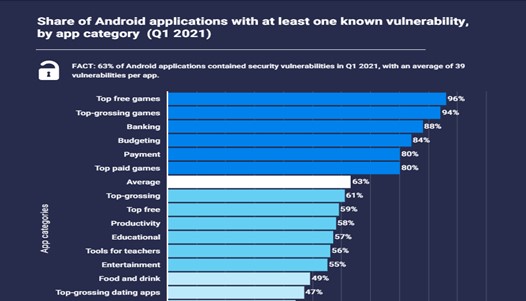The Basics of Python Programming for Beginners
Python is a programming language that is great for beginners to learn, and it's even more beneficial when you have the guidance of a Python development agency. It's easy to understand and write, making it a popular choice for people new to coding. This article will cover the basics of Python programming, starting from the very beginning.
Unlike other programming languages, we will explain why Python is a great language for beginners. Python uses simple and readable syntax, meaning the code looks like English. This makes it easier for beginners to understand and write code without getting overwhelmed. With the assistance of the best Python development agency, you can receive expert support and guidance tailored to your specific needs.
Python is also a versatile language with a wide range of real-world applications. It is used in web development, data analysis, scientific computing, artificial intelligence, and many other fields. Learning Python opens up many opportunities for you to explore different areas of programming.
Setting Up the Python Development Environment
Setting up the Python development environment is the first step to writing and running Python code. Depending on your computer's operating system, you must install Python. Python can be installed on different platforms like Windows, macOS, and Linux.
Once Python is installed, you will need a software tool called an Integrated Development Environment (IDE) or a text editor to write and run your Python code. Some popular IDEs and text editors for Python are PyCharm, Visual Studio Code, and Sublime Text. In the development environment, you can write and execute your Python code to see the results.
Python Syntax and Fundamentals
Now that you have set up the Python development environment, let's understand some Python programming basics. In Python, you can store values in variables. Variables are like containers that hold different types of data, such as numbers, text, or lists.
Control flow statements help you control the execution of your program. One important control flow statement is the "if-else" statement, which allows your program to make decisions based on certain conditions.
Functions and modules are essential in Python programming. A function is a reusable block of code that performs a specific task. You can define your functions or use built-in functions provided by Python. Modules are collections of functions and variables that can be imported into your Python code. They provide additional functionality and allow you to organize your code better.
Data Structures and Collections in Python
In Python programming, data structures are like containers that help you organize and store different types of data. The main types of data structures are lists, tuples, dictionaries, and sets.
Imagine you have a shopping list, and each item is like an element in a list. You can add or remove items and even change the order of items in the list. This is similar to how lists work in Python. Tuples are similar to lists but cannot be changed once created.
Dictionaries are like phone books. You have a name (key) and a phone number (value) associated with each name. You can look up someone's phone number by using their name. Sets are similar to bags where you can put different items, and they don't have a specific order.
You can perform various operations on these data structures. For example, you can add, remove, or modify elements in a list. You can also combine or compare different lists, tuples, or sets. Additionally, you can use built-in functions that Python provides to manipulate and work with data.
File Handling and Input/Output Operations
File handling in Python involves reading from and writing to files. Just like you can read a book or write something in a notebook, Python can read and write data from files.
Imagine you have a recipe written in a cookbook. You can read the recipe to know what ingredients you need and how to prepare the dish. In Python, you can read a text file and extract its information.
Similarly, you can write information to a file. It's like writing a letter on a piece of paper. Python can create and modify files, and you can store data in different file formats, such as text files, CSV (Comma-Separated Values), or JSON (JavaScript Object Notation).
Python also allows you to interact with users through the console. Like a conversation, you can ask the user for input and display output on the screen. This helps in creating interactive programs where the user can provide information, and the program responds accordingly.
Error Handling and Exception Handling
Error handling and exception handling are important concepts in Python programming that help you deal with potential errors and exceptions that may occur during the execution of your code.
Python has a hierarchy of errors and exceptions, which means that different types of errors are organized in a structured way. By understanding this hierarchy, you can better identify and handle specific types of errors.
You can use a try-except block to handle errors and exceptions in Python. This block allows you to write code that may generate an error and then specify what should happen if that error occurs. By using try-except blocks, you can gracefully prevent your program from crashing and handle errors.
When writing Python code, it's important to include proper error-handling mechanisms. This means anticipating potential errors and implementing appropriate actions to handle them. Doing so can make your code more robust and ensure it can handle unexpected situations effectively.
Introduction to Object-Oriented Programming (OOP)
Object-Oriented Programming (OOP) is a programming model that allows you to organize your code around objects, which are instances of classes. This approach helps in creating modular and reusable code.
In OOP, a class is like a blueprint or a template that defines the properties and behaviours of objects. Objects, however, are the instances created from these classes.
Some basic concepts of OOP include encapsulation, inheritance, and polymorphism. Encapsulation means bundling data and methods within a class to provide data privacy and code organization.
Inheritance allows you to create new classes that inherit properties and methods from existing courses, enabling code reuse and promoting hierarchical relationships. Polymorphism allows objects of different classes to be treated as belonging to a common class, simplifying code and promoting flexibility.
Working with External Libraries and Modules
When working with Python, there are times when you need to use additional tools or functions that are not built into the language itself. These tools are called "libraries" or "modules." To use them, you first need to install them on your computer. This can be done easily using a tool called "pip."
Once you have installed a library, you can import it into your Python code. Importing a library means making its functions and features available in your program. Many popular libraries are available for Python, each designed for specific tasks. For example, NumPy works with numbers and arrays, Pandas is useful for data analysis and manipulation, and Matplotlib helps create visualizations.
Python has a vast ecosystem of libraries, which means there are many options for different applications and purposes. If you have a specific task in mind, there's a library out there that can help you accomplish it more easily and efficiently.
Introduction to Web Development with Python
Web development is the process of creating websites and web applications. In Python, some frameworks make web development more accessible by providing pre-built tools and structures. Two popular frameworks are Django and Flask.
Django and Flask simplify building web applications by handling common tasks like managing databases, taking user authentication, and routing URLs. They provide a structure and set of conventions that you can follow to build your application. As these are slightly complex concepts to implement, you should always seek assistance from a proven Django development company.
To create a simple web application using Python and a framework, you must understand the basics of HTML, CSS, and web requests. HTML is a markup language used to structure the content of a web page, while CSS is used to style and format the page's appearance. Web requests allow your application to communicate with other servers and retrieve data.
Conclusion
This guide provides a solid foundation in Python programming for beginners, covering fundamental concepts like variables, data types, loops, and conditional statements. Whether interested in software development for startup ventures or simply eager to learn Python, this guide emphasizes the importance of continuous learning, practice, and exploration.
In conclusion, embracing real-world projects in Python yields practical skills and valuable experiences. Whether for startups or other ventures, the joy of building with Python is boundless. Stay curious, explore endlessly, and relish the process. Finoit, led by CEO Yogesh Choudhary, embodies this spirit, inspiring others to create amazing things with Python!



Comments
Post a Comment